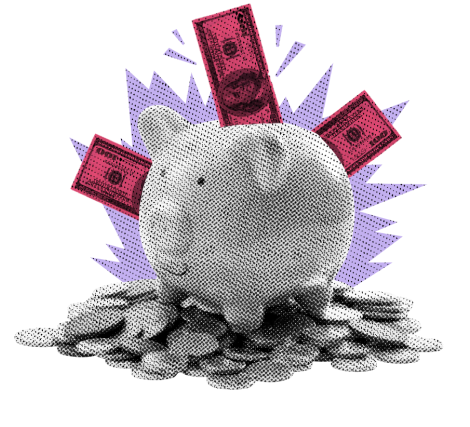
Q1 earnings season kicks off today. With trade wars, recession risks, and shifting policy, will any guidance be worth trusting?
KEY TAKEAWAYS
- Earnings season is here and it’s more about forward guidance than past performance.
- Management is likely to sandbag guidance to allow room for upward revisions later.
- Trade war, recession fears, and policy changes are creating forecasting chaos.
- Some companies, like Delta, are withdrawing guidance altogether.
- Investors should focus on fundamentals and long-term thesis, not just this quarter’s noise.
MY HOT TAKES
- Guidance is basically an art form now—with a heavy dose of CYA.
- CEOs will want to blame trade issues but not offend the administration.
- Sandbagging is expected—and even rewarded if done “right”.
- This isn’t just about smokestack industries—every sector is affected.
- Revising guidance down is bad, up is a party—that dynamic shapes the game.
- You can quote me: “Tariff policies have been shifting faster than a Florida weather forecast, or your cat’s loyalty.”
Where it stops… nobody knows. Today marks the unofficial, “official” start to earnings season. A several-weeks period where companies parade in front of investors, Wall Street, the press, and the world to reflect on the last quarter's results. Were they able to live up to analysts’ expectations? Was EPS and Revenues more or less than average forecasts, and by how much? Were units sold, new subscribers, capital expenditures, gross margins on or off the mark? It is similar to your annual physical examination, except it is quarterly.
Like your physical exam, the results are kind-of backward looking. Have you lost or gained weight? Is your blood pressure, cholesterol, AIC better or worse than your last visit? Those are all important metrics to assess whether you are improving or… um, not improving. Clearly, improving health is always preferred, not just for you, but also for your portfolio companies.
Wouldn’t it be great if when you arrived at your physician's office, you could tell her that you expect your A1C level to be between 5.3% and 5.1% at your next visit–almost a year from now? 😆 The physician would likely be happy, as that is considered to be healthy by most standards, and if it is trending down, that is a good thing; you would probably earn a lollipop, though that may lower your chances of hitting that target. Even more pleased would be your shareholders–your family who has a vested interest in your health.
Well, that is exactly what earnings announcements are today. Sure, investors care about how well you did last quarter. Meeting or exceeding expectations shows that management is capable of traversing the challenges of running a complex operation. However when we invest in stocks, we do so because we expect future performance to be outstanding. Past is OK, but the future is what it is all about. Yes folks, for the stocks, it’s all about future expectations.
That is why confident CEOs and CFOs strut in front of shareholders and let them know what to expect in the coming months and quarters, and sometimes even years. We like that, especially if it is going up, and by more than their competition. Why am I going through all this? Because I want to underscore the importance of the future when it comes to earnings. Management provides us guidance (that’s the Wall Street term for hints), so that we, or rather Wall Street analysts can come up with forecasts. While most of them (not all) can probably come up with targets by themselves with some guesswork and monte carlo simulations, they rely heavily on the hints, or guidance, provided by companies for at least a base case.
That brings us to first-quarter (or Q1) earnings season which begins today in earnest. Just about every sector will be impacted by the currently-raging trade war. No, it’s not just smokestack industries and retail. Banks lend money to those industries, and if they are struggling and unsure, they are less likely to borrow money… or, the banks may be less willing to lend money to them. When banks lend less money, they make less money. Sure some banks, especially the big diversified ones that will begin releasing results today, have other sources of revenue like trading and investment banking, but for the most part, all banks are in the business of lending. And now while we are talking about banks, they are also highly sensitive to economic conditions, so if a recession is on the horizon, it may not be good for earnings. Analysts and bank management must take all of these expectations and come up with estimates for what everything will look like when the company reports earnings NEXT YEAR.
It’s not just banks that go through this exercise. Imagine doing this with any level of accuracy in the current economic environment. Can you see where I am going with this? From an economics standpoint, the economy seems to be healthy at the moment but more and more economists are increasing their estimates for the likelihood of recession. Some even contend that we are already in a recession. That’s bad enough. Unlike banks, which are indirectly impacted by tariffs, many other industries will be directly and almost immediately impacted by tariffs.
Tariffs, alone, are bad enough for companies as they decrease margins and hinder demand. What’s worse, tariff policies have been shifting faster than a Florida weather forecast, or your cat’s loyalty. If you were a car manufacturer, soft goods retailer–anyone that produces or resells goods that rely on any sort of imports, how are you supposed to know what your Cost of Goods and your subsequent gross margins are going to be? What about revenue forecasts? If a company attempts to pass additional costs to consumers by raising prices, how many less units will you sell due to decreased demand?
What about currencies? They have been all over the place lately and forecasting those has become even more challenging? How might those impact future profitability? How about regulations and policy? Those are supposedly changing over the next year as well? Will regulations be relaxed as hoped? Will corporate taxes be lowered as promised? All of this and much, much more goes into forward guidance. So, why would management risk giving guidance that is likely to be wrong? Moreover, revising guidance at some future point is considered a bad look… unless significantly revised upward. 😉 That means that any guidance we get over the coming weeks will likely be inaccurate and intentionally sandbagged, which means we will be presented with the worst case scenario, so that managers will be able to upward-revise in future quarters.
Some companies will decide to withdraw full-year guidance, as Delta Airlines did earlier this week, a throwback to the pandemic days when most companies stopped providing guidance. In those cases we must rely on the anecdotal data we get from management commentary. That is an art in and of itself. Management doesn’t want to imply that it has no clue about what to expect from its business as this trade horror flick plays out. It also does not want to set expectations so high that investors are let down. But there is some sort of in-between where managers lower expectations and place the blame on the administration, which we are likely to see a lot of in the coming days. No responsible CFO would not at least warn investors of “trade headwinds.” When pressed, CFOs may even estimate the damage, but not likely, especially given the scenario where Chinese tariffs were adjusted several times in just the last few days, and not everyone in the administration calculates the effective tariffs the same way, so in essence, most people don’t even know what the tariff is. Did I mention China’s 125% counter-tariff to the US’s most recently ratcheted up reciprocal tariff?
This will indeed be a challenging earnings season. There is likely to be lots of withdrawals of guidance and lots of rhetoric. That rhetoric will be aimed at the trade situation, but not too much as to get into the sites of the administration. It will be very important to stick to the basic rules that I have so often relayed to you in my posts. Does management have a good handle of what is going on? Have the fundamentals materially changed? Does your investment thesis still hold? While the former two questions will be hard to answer in this environment, surely the latter can be answered. Recognize that these recent challenges will affect all US companies, so try to be patient and look past this hopefully-transient situation.
YESTERDAY’S MARKETS
Stocks had a challenging and volatile session, closing in the red, but ultimately ending up above painful session lows. Bond yields continued to climb leaving bond traders and the administration perplexed. Consumer price inflation was lower than expected, but that bit of good news fell on deaf ears, as trade war angst took the reins.

NEXT UP
- Producer Price Index / PPI (March) may have risen to 3.3% from 3.2% year over year.
- University of Michigan Sentiment (April) probably declined to 53.5 from last month’s 57.0.
- Today’s Fed speakers: Kashkari, Collins, Musalem, and Williams.
- Important earnings to watch today: Blackrock, JPMorgan Chase, Wells Fargo, Fastenal, and Morgan Stanley.
- Next week: earnings, earnings, earnings, along with housing numbers, Retail Sales, and Industrial Production. Check back in on Monday to get your weekly earnings and economics calendar so you can be ready!
.png)

